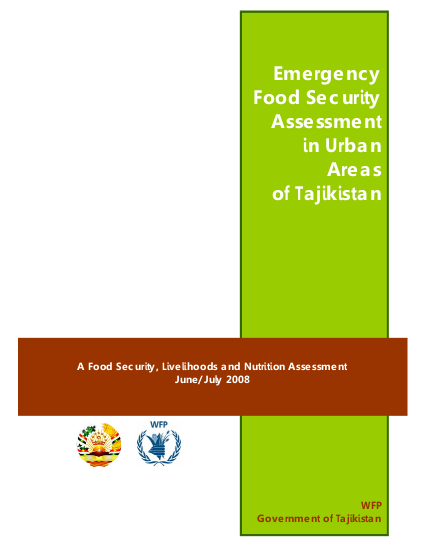
The main objective was to update the knowledge base on the food security, livelihoods and nutrition situation in urban Tajikistan at household level in order to better inform priorities and programming decisions on food and non-food assistance, taking into account the recent natural and economic shocks experienced by the population. Specific objectives included: ?? Describe the profile of households and individuals affected by food insecurity and/or malnutrition, including their location and socio-economic characteristics; ?? Elucidate the causes of food insecurity and malnutrition, including a distinction between chronic and transitory food insecurity; ?? Identify towns presenting higher prevalence of food insecurity and/or malnutrition and their main characteristics; ?? Forecast the evolution of the food security and nutrition situation in the next 12-24 months, and describe the groups most likely to be food insecure and/or malnourished in that period who would need assistance; ?? Review current and planned food and other interventions and unmet needs; ?? Recommend food and non-food interventions for the next 12-24 months to meet unmet needs, including indications of the type of interventions, amounts/contents (as much as possible), and targeting criteria; ?? Suggest indicators that should be monitored at urban neighbourhood, household and market levels to follow-up the evolution of the food security and nutrition situation.
Resource collections
- UN Habitat - Urban Response Collection
- Urban Response - Urban Crisis Preparedness and Risk Reduction
- Urban Response Collection - Community Engagement and Social Cohesion
- Urban Response Collection - Economic Recovery
- Urban Response Collection - Environment and Climate Change
- Urban Response Collection - Housing, Land and Property
- Urban Response Collection - Urban Crisis Response, Recovery and Reconstruction
- Urban Response Collection - Urban Resilience